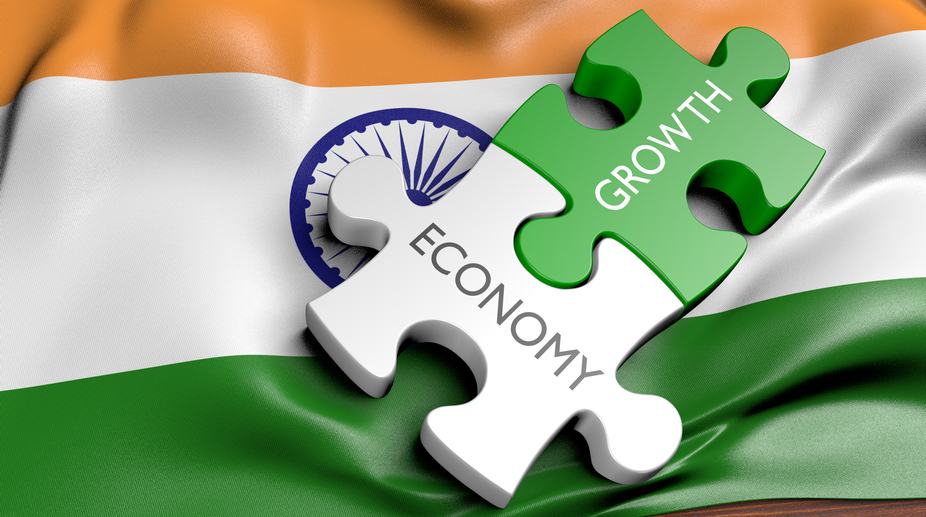India’s economic growth has bottomed out and the GDP growth will recover further to 7 per cent over the next few quarters but it is likely to take few years to return to 7.5 per cent above levels, Standard Chartered said.
In a research report on Economic Outlook in 2018, it said the worst is over for India’s GDP growth, while forecasting a growth rate of 6.5 per cent for the current fiscal and 7.2 per cent in the year thereafter.
Advertisement
“We expect growth to normalise gradually over the next four to six quarters as the disruptive impact of major policy changes fades,” it said.
Economic growth has bottomed out after slowing to a 13- quarter low of 5.7 per cent in April-June. “We see growth recovering further to 7 per cent over the next few quarters (6.3 per cent in July-September 2017) supported by several factors,” Standard Chartered said.
These factors include economy’s increasing alignment to policy changes, temporary GST exemptions facilitating a smooth transition to the new framework, bank recapitalisation addressing the ‘twin balance sheet’ issues and improving farm incomes as agriculture prices recover from demonetisation and supply shocks.
The government, it said, has implemented bold reforms in recent years, including the Goods and Services Tax (GST) and the Insolvency and Bankruptcy Code (IBC).
“While these reforms have brought short-term economic pain, they have boosted India’s medium-term outlook,” the report said.
Moody’s has upgraded India’s sovereign rating by one notch to Baa2 and changed its outlook to stable from positive in November. Also India significantly improved its ranking in the World Bank’s 2017-18 Ease of Doing Business survey, rising 30 places to 100.
“However, it will likely to take India a few years to return to GDP growth levels of 7.5 per cent and above,” Standard Chartered said.
Indian economy had grown by 7.9 per cent in 2015-16.
“Even as the economy stabilises and the twin balance sheet problem is gradually addressed over the next two years, private investment a current weak point for growth is likely to take time to improve.
“Excess capacity and, more importantly, general elections in May 2019 are likely to delay the positive impact of policy changes,” it said.
Standard Chartered said the market is concerned about fiscal slippage in FY18 in the wake of GST implementation and higher crude oil prices.
“We expect a temporary reversal of fiscal consolidation in FY18. We forecast a deficit of 6.3 per cent of GDP (with upside risk to 6.6 per cent), versus 6.2% in FY17 and the 5.9 per cent budgeted by the government,” it said.
The Budget in February should provide greater clarity on fiscal dynamics.
“Whether India targets achieving its fiscal consolidation target (6 per cent deficit) in FY19 or FY20 will depend on how the government prioritises the competing objectives of supporting growth (particularly ahead of general elections) and achieving macroeconomic stability,” it said.
Standard Chartered expects RBI Governor-led Monetary Policy Committee (MPC) to keep interest rates unchanged in near term on concerns about fiscal slippage and its commitment to keeping inflation at 4 per cent in an environment of higher crude oil prices.
The government’s initial response to GST-related issues including a complex tax structure, higher rates and low compliance has been encouraging, it said adding this would need to be sustained over the next 9-12 months in order to achieve a better GST framework.
The GST Council (the decision-making body for GST issues) will also have to strike the right balance between ensuring that the ‘one nation, one tax’ concept is not lost by providing too many concessions; and addressing the short-term economic pain.
Failure to do so could reduce the potential efficiency gains from GST implementation.











